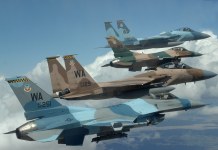The world of advanced warfare in the future is going to be something absolutely different with the dawn of sixth-generation fighter jets, unmanned vehicles using artificial intelligence, high-energy lasers, hypersonic nuclear missiles and modernised stun guns.
With the possibility of future conflicts to be fought on multiple battlegrounds spread across the world, there will be a need for a prompt supply of weaponry from the actual base lying thousands of miles away from the combat zone.
In what would be a significant step towards overcoming that challenge, the United States military command in charge of overseeing logistics operations has signed a deal with leading industry partners in developing space technologies that could help transport weapons anywhere across the world within 60 minutes.
The US Transportation Command (TRANSCOM) has forged a partnership with Elon Musk’s American aerospace and space transportation services giant Space X and Exploration Architecture Corporation (XArc), which offers expertise in space station and spaceport design.
The three agencies will garner their pool of resources in devising “shipping routes” in space which are able to carry large loads of cargo equivalent to that of the McDonnell Douglas/Boeing C-17 Globemaster III military transport aircraft in the fastest time possible.
General Stephen R. Lyons, who serves as the commander at TRANSCOM, said that the military team are in the process of building a prototype for a reusable a rocket capable of carrying the heavy load while flying at speeds of 7,500mph.
“Think about moving the equivalent of a C-17 payload anywhere on the globe in less than an hour. Think about that speed associated with the movement of transportation of cargo and people,”
There is a lot of potential here and I’m really excited about the team that’s working with SpaceX on an opportunity, even perhaps, as early as (20)21, to be conducting a proof of principle. I had no sense for how fast SpaceX was moving, but I’ve received their update and I can tell you they are moving very rapidly in this area.” said Lyons, while speaking at the National Defense Transportation Association’s Fall Meeting.
Pertaining to the US Air Force fact sheet, the large high-wing, four-engine, T-tailed C-17 has a maximum payload of around 82 tons and a maximum speed of 520 mph.
It has been America’s go-to plane for its ability to carry large equipment, supplies and troops directly to small airfields in harsh terrain anywhere across the world. The plane owing to its massive and sturdy stature has been an ever-reliable option since it began worldwide operations in the 1990s.
In comparison, if the proposed cargo rocket built under the partnership wants to trump the C-17 in delivering cargo anywhere across the world within the stipulated hour’s time, it would need to travel at an average speed of 9,000 miles an hour.
With the unprecedented manner of point-to-point space launch of the cargo transport service requiring a need to go through examination procedures, the US Department of Defence will look over every “legal, diplomatic, statutory, and regulatory issue that must be addressed to enable the normalization of high-frequency, point-to-point, commercial space launches.”
TRANSCOM and its space industry partners have already signed Cooperative Research and Development Agreements (CRADA) in a bid to swiftly facilitate the radical new form of transportation.
While the move is considered to be historic in the field of space innovation, doubts remain over the possibility of using commercial spacecraft to transport logistics across the world due to technical and economical reasons.
According to Mark Gunzinger, director of future concepts and capability assessments at the Mitchell Institute, the probability of rapid transport in becoming a reality could take decades.
“While the industry is making progress on “technical and cost barriers” related to the practical use of space transportation, it is not at the point where it would be a cost-effective means compared to other alternatives, such as prepositioning additional critical materials forward. Will rapid space lift ever be a reality? Yes, but it will probably be decades, not a few years before it is cost-effective.” said Gunzinger.




